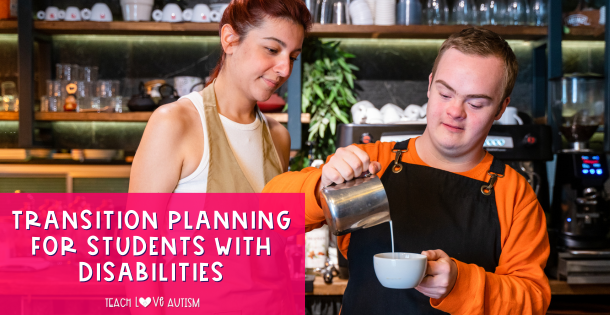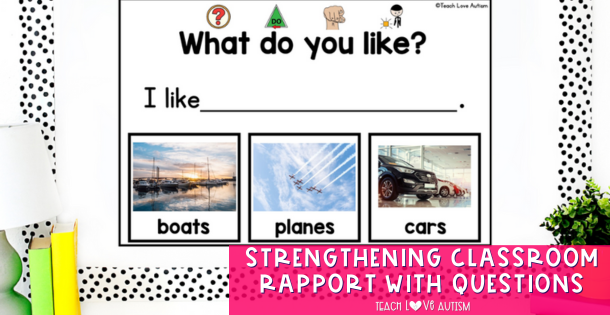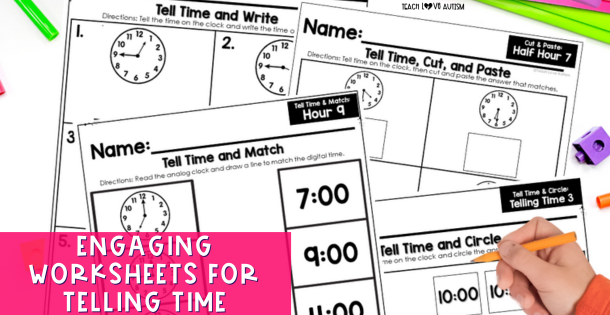Transition planning for students with disabilities from high school to the workforce is a significant milestone for any student, but for secondary students with disabilities, this journey can be particularly transformative. It demands a coordinated effort among parents, related...

Transition planning for students with disabilities from high school to the workforce is a significant milestone for any student, but for secondary students with disabilities, this journey can be particularly transformative. It demands a coordinated effort among parents, related service providers, and educators to ensure that these students are equipped with the necessary skills and support to not only enter but thrive in the world of employment. In this article, we will explore a comprehensive roadmap to help prepare secondary students with disabilities for successful employment following their high school years. It truly needs to be a collaborative approach among all individuals working with the student.
Early Transition Planning for Students with Disabilities
Early planning is the cornerstone of a successful transition. Ideally commencing at age 14 or even earlier, this process should involve active collaboration between students, parents, educators, and other stakeholders. Together, they set clear, measurable post-secondary goals, encompassing not just employment but also education and independent living aspirations. This stage lays the groundwork for a well-rounded transition plan that aligns with the studentís individual needs and aspirations. It ensures that while the student is still in school planning and training are occurring before the student graduates.
Using Comprehensive Assessments
The heart of effective transition planning for students with disabilities lies in conducting comprehensive assessments that uncover each studentís academic, functional, and vocational strengths while identifying areas where they require additional support. These assessments should comprise formal evaluations, self-assessment tools, and input from parents and professionals. Special Education teachers and related service providers should include these results in the Individualized Education Plan (IEP) for the team to use. The results serve as a foundation for shaping actionable goals and strategies tailored to each studentís unique profile.
Individualized Education Plans (IEPs)
With assessment data in hand, the development of an Individualized Education Program (IEP) becomes paramount. This program should align seamlessly with the studentís post-secondary objectives. It should include specific accommodations, modifications, and related services that support both academic and vocational success. Whatís more, it should be a living document, subject to regular reviews and updates to reflect the studentís evolving needs and goals. Incorporating studentís interests and skills are imperative to these transition goals being met.
Building Self-Advocacy and Communication Skills
Empowering students to confidently express their strengths, needs, and preferences is a fundamental skill. Through a combination of instruction and guidance, self-awareness and self-determination are fostered, equipping students with the tools they need to communicate effectively with teachers, employers, and colleagues in their future work environments. Itís practiced in the classroom and the home and taught in a natural environment to help the student to generalize the skills for use later.
Vocational Exploration for Transition Planning with Disabilities
To help students make informed career decisions, itís essential to provide them with opportunities to explore various vocations. Itís achieved through internships, job shadowing, and vocational assessments. Encouraging students to identify their interests, skills, and passions in relation to future employment is important. You can also address potential barriers to ensure they embark on the right path. Many high schools will have programs that allow students to try different career fields and often going on field trips to local businesses can help students learn about different careers.
Collaboration with Related Service Providers
The path to successful transition planning for students with disabilities often involves specialized support from related service providers such as speech therapists, occupational therapists, and counselors. Collaboration with these professionals ensures a coordinated approach to addressing the unique needs of each student. It also promotes a holistic understanding of how various services can complement one another in the pursuit of a studentís goals.
Family Involvement in Transition Planning for Students with Disabilities
Parents are key stakeholders in the transition process. Engaging parents in this journey not only empowers them to support their children effectively but also strengthens the overall support network. Offering resources, workshops, and guidance enables parents to actively participate in their childís transition to employment. Open and consistent communication between parents and educators ensures that everyone is aligned in their efforts. It needs to be determined by the team how the student will independently function after graduation. Getting family input is essential to crafting a good plan.
Financial Literacy and Independence
Equipping students with the knowledge and skills to manage their finances is an essential component of transition planning. Financial literacy includes budgeting, saving, and understanding government benefits and services they may be eligible for. Alongside financial literacy, promoting independence in daily living skills, such as cooking, transportation, and self-care, is equally vital for fostering autonomy.
Pre-Employment Skills Training

Building practical skills that are directly applicable to the workforce is crucial. Training should encompass resume building, job searching, interview preparation, and workplace etiquette. Creating opportunities for mock interviews, role-play scenarios, and peer feedback helps students gain confidence in their ability to navigate the job market effectively.
Job Placement and Networking for Transition Planning for Students with Disabilities
Collaborating with local businesses, vocational rehabilitation agencies, and community organizations is instrumental in facilitating job placements, internships, or apprenticeships. These opportunities should be tailored to match studentsí interests and abilities. Encouraging students to network and establish professional relationships within their chosen field further enhances their prospects in the job market.
Post-Secondary Education Consideration:
For some students, post-secondary education may be the desired path to employment. In this context, itís essential to explore various options, such as colleges, vocational schools, or online courses. Providing assistance with the college application process, offering guidance on financial aid, and ensuring necessary accommodations are in place for higher education are all crucial aspects of this step.
Celebrating Progress and Adjusting Plans:
Transition planning for students with disabilities is an evolving process. Many students will have plans that start at 14 years of age and can change many times before graduating. Recognizing and celebrating milestones and achievements is as important as regular reviews and adjustments to the transition plan. These reviews should take into account the studentís changing goals, evolving strengths, and shifting needs. Input from the student, parents, and the support team should inform any necessary adjustments.
Inclusion and Diversity:
Preparing students for employment in todayís diverse world is integral to their success. Emphasizing the significance of an inclusive and diverse work environment fosters an appreciation for diversity and the value of different perspectives in the workplace. Offering training on disability awareness and inclusion for employers and coworkers is important. It ensures that the transition is smooth not just for the student but also for their future colleagues.
In conclusion, guiding secondary students with disabilities toward successful employment is a meticulous, collaborative, and continuous process. By adhering to these detailed steps and substeps, we empower students to develop skills and confidence. Furthermore building connections necessary for a fulfilling career path beyond high school. Each step in this journey brings us closer to the overarching goal: ensuring that every student, regardless of their abilities, has the opportunity to reach their full potential in the workforce.
The post Crucial Steps in Transition Planning for Students with Disabilities appeared first on Shop | Teach Love Autism.















